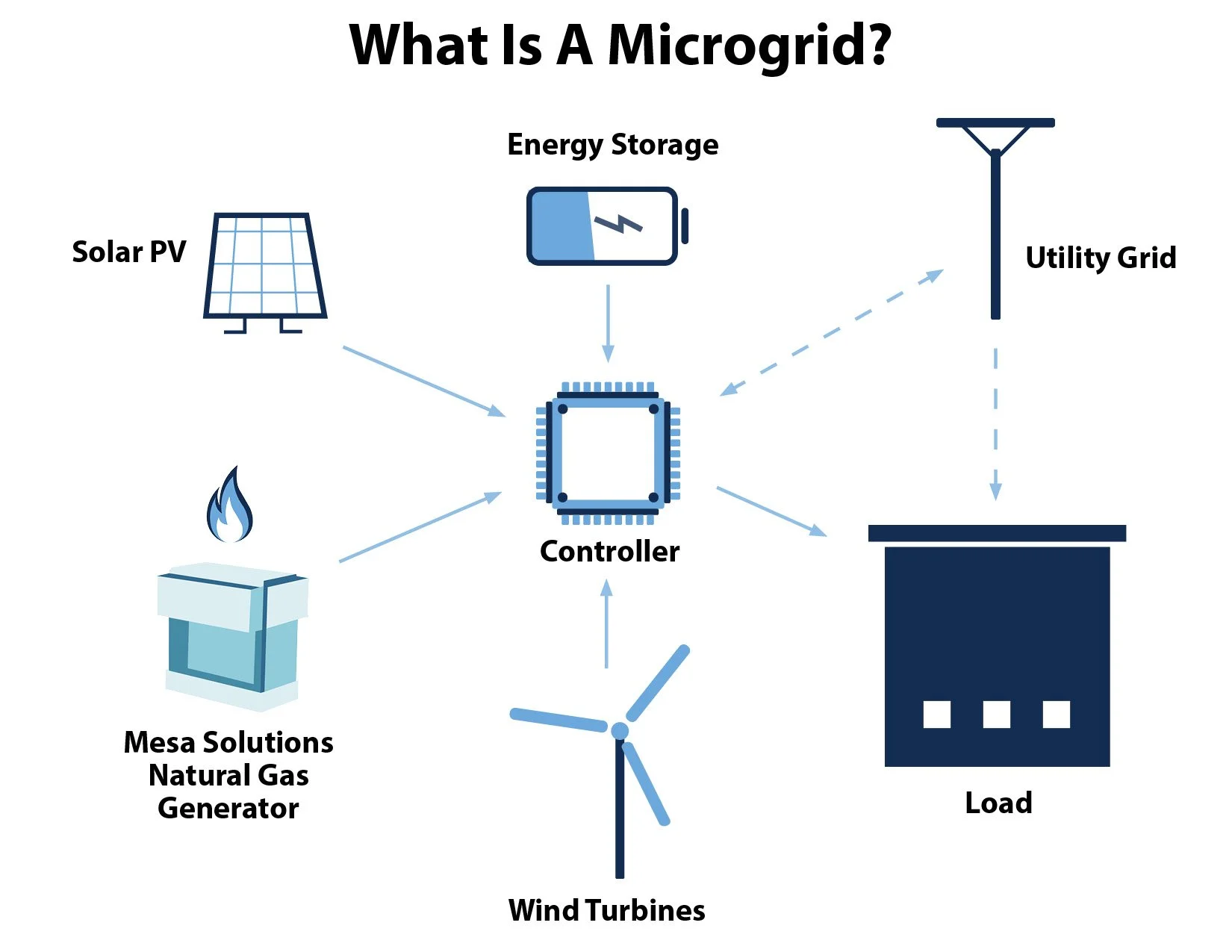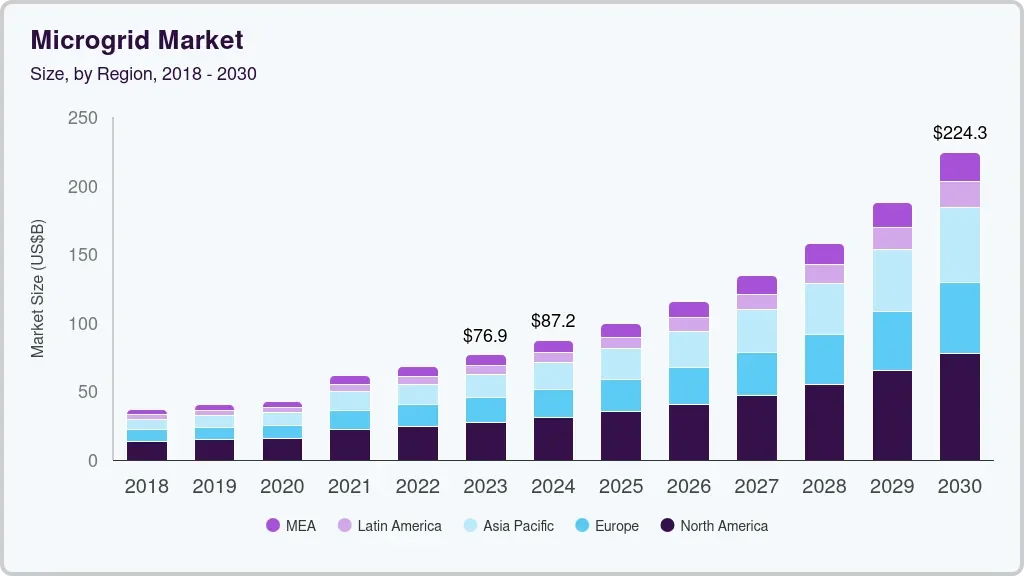
Micro Grids
Micro grids are emerging as one of the most important innovations in the global shift toward a more sustainable, resilient, and decentralized energy systems. As energy demands grow and the need for climate adaptation becomes more urgent, micro grids are positioned to become a foundational technology in the way we generate, distribute and manage electricity. A micro grid is a localized energy network that can operate in parallel with the traditional centralized grid or independently from it, in what is know as “island mode.” These systems typically combine various energy sources, including renewable options such as solar panels, wind turbines, and small-scale hydroelectric systems, alongside energy storage technologies like lithium-ion batteries or even hydrogen fuel cells. Advanced control systems and software allow micro grids to balance to generation and demand dynamically, making them highly efficient and adaptable.
One of the most significant advantages of micro grids is their ability to enhance energy resilience and reliability. In regions prone to natural disasters—such as hurricanes, wildfires, floods, or extreme heat—centralized power grids are often vulnerable to widespread outages. Micro grids provide a localized backup that can continue operating independently, ensuring uninterrupted power supply to critical facilities such as hospitals, military bases, emergency shelters, water treatment plants, and data centers. This capability is not only essential in disaster response but also vital in maintaining national security, economic stability, and public health during grid disruptions or cyberattacks.
Beyond resilience, micro grids are central to the clean energy transition. Their ability to integrate and optimize renewable energy sources helps reduce greenhouse gas emissions, diminish reliance on fossil fuels, and support national and global climate goals. Renewable energy is inherently variable—solar energy depends on sunlight, and wind energy depends on weather conditions. Micro grids help manage these fluctuations by intelligently storing excess energy during periods of high production and dispatching it when demand is high or renewable generation is low. This not only improves the stability of the local grid but also makes renewable energy more economically viable.
The future of micro grids is being shaped by a wave of technological innovations. Artificial intelligence and machine learning are enabling smarter energy management systems that can forecast usage patterns, weather conditions, and energy prices to optimize generation and consumption. Blockchain technology is being explored to support decentralized energy markets, allowing households and businesses within a micro grid to trade energy directly with one another in peer-to-peer systems. Advances in battery technologies—such as solid-state batteries and next-generation flow batteries—are improving energy storage capacity, safety, and efficiency. Meanwhile, grid-forming inverters allow micro grids to operate independently from the main grid without losing stability or frequency control, making them more flexible and robust.
Looking ahead, micro grids will increasingly become a vital part of urban infrastructure. Cities are expected to deploy micro grids in neighborhoods, school campuses, public transport systems, and government buildings, not only to improve energy security but also to reduce their carbon footprints. In the commercial and industrial sectors, companies are turning to micro grids to manage energy costs, reduce emissions, and ensure operational continuity during outages. For the military and defense sectors, micro grids offer strategic energy independence, allowing secure and continuous operation of mission-critical systems even under attack or in remote locations. Additionally, as climate change continues to stress traditional power systems with extreme weather and peak load demands, micro grids offer a practical solution to reduce strain on the main grid and improve overall system reliability.
From a policy and planning perspective, governments around the world are beginning to recognize the strategic value of micro grids. Incentive programs, regulatory reforms, and funding initiatives are being introduced to support their development. Public-private partnerships are emerging to accelerate deployment in both developed and developing economies. Financial innovations such as pay-as-you-go models, leasing, and community ownership schemes are making micro grids more accessible, even to low-income communities.



